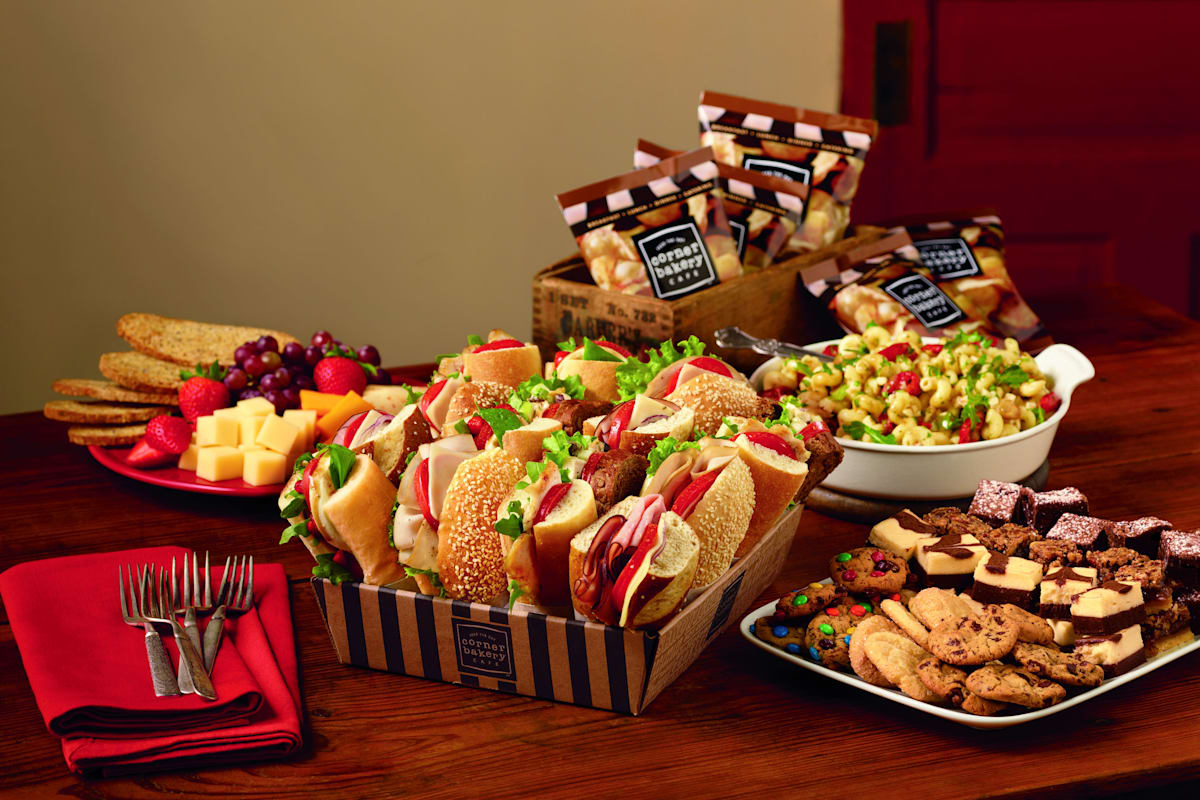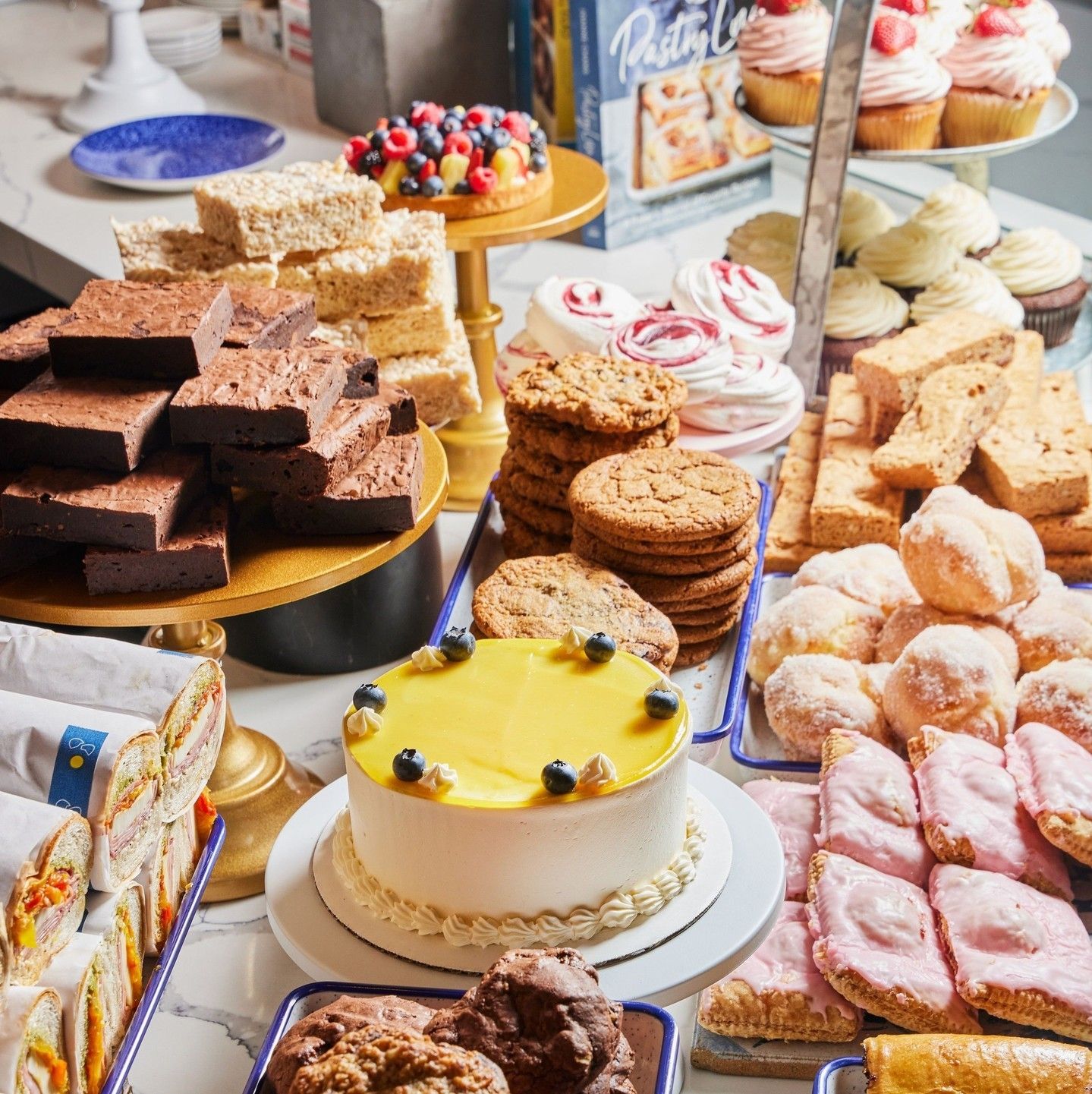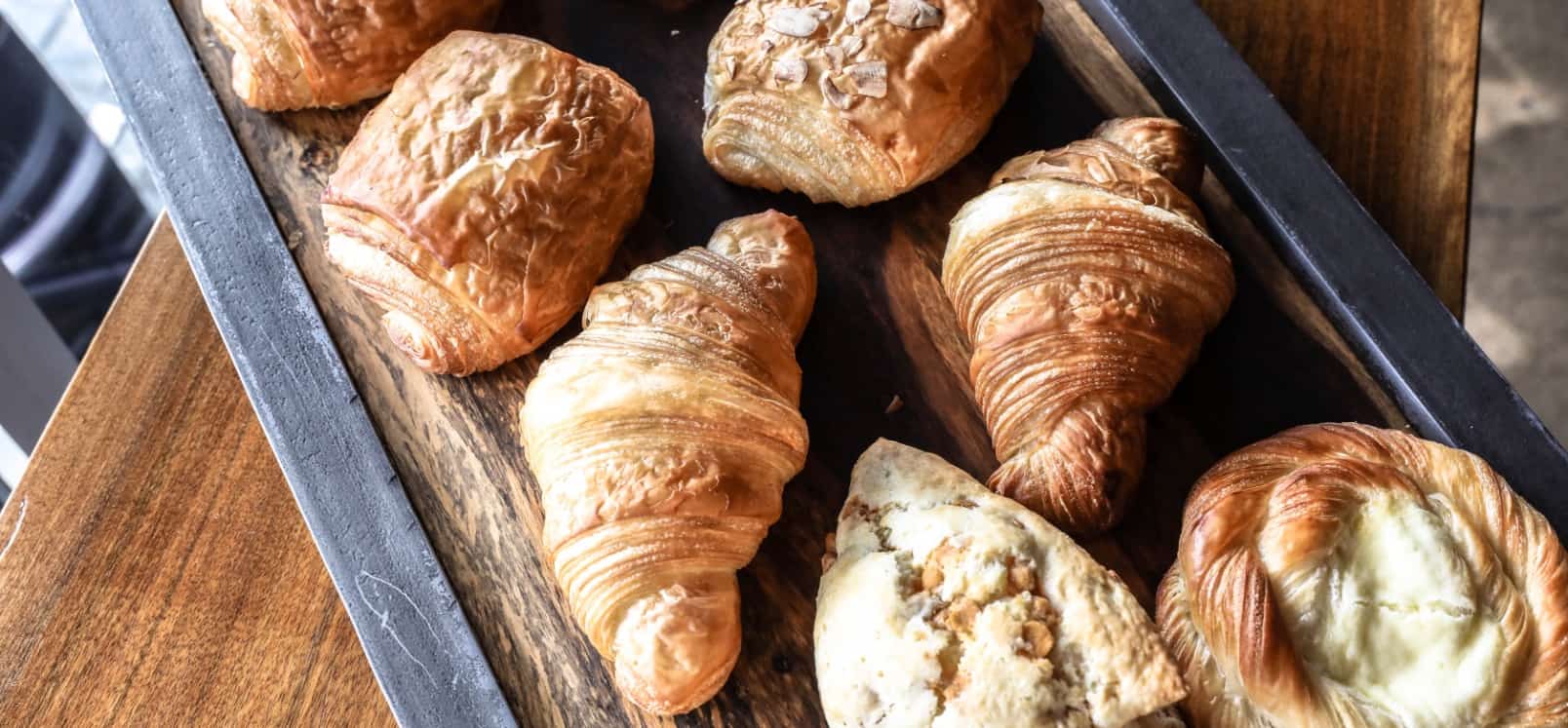Comprehending the Art of Pastry Shop Products: From Fresh Baked Breads to Irresistible Pastries and Finger Foods
From the science behind the ideal loaf of bread, where fermentation and gluten growth play essential functions, to the skill needed for developing layered pastries, each facet discloses a compelling narrative of workmanship. The convenience of finger foods illustrates how taste and texture can be skillfully combined to engage varied taste choices.
The Scientific Research of Bread Making
At the heart of every loaf of bread lies an interesting interplay of chemistry and biology. The procedure of bread making starts with the mix of flour, salt, yeast, and water-- each active ingredient playing a crucial function in the end product. Flour consists of proteins, mainly glutenin and gliadin, which, when blended with water, kind gluten (Bakery Catering Maddington). This flexible network is crucial for trapping gases generated during fermentation.
Yeast, a living organism, ferments the sugars existing in the flour, producing carbon dioxide and alcohol in the process. The co2 gas develops bubbles in the dough, creating it to climb and establish a light appearance. The temperature and moisture throughout fermentation substantially affect yeast task and, subsequently, the bread's taste and texture.

Mastering Bread Strategies
Just how can one accomplish the delicate balance of appearance and taste that defines phenomenal pastry? Mastering bread strategies requires a deep understanding of components, approaches, and the scientific research behind them. Fundamental to this craft is the option of top notch ingredients-- flour, butter, sugar, and eggs-- each playing an essential function in the end product's flavor and texture.
The strategy of lamination, which involves folding layers of dough and butter, produces the wanted flakiness in breads like croissants and smoke pastry. Precision in temperature is essential, as butter needs to remain cool to make certain ideal layers. Similarly, appropriate blending methods, such as the creaming technique for cakes, make certain even consolidation of air and fat, causing a light and airy crumb.
In addition, preserving the appropriate humidity levels during cooking can dramatically impact the outcome, ensuring that breads increase correctly and attain that golden-brown finish. Finally, the art of pastry also requires perseverance and practice; each effort improves one's skill and understanding of the intricate balance needed to produce irresistible pastries that thrill the detects. Proficiency in these strategies inevitably differentiates a knowledgeable pastry chef from an amateur.
Types of Finger Foods
The world of cooking thrills prolongs past breads to encompass a vast variety of finger foods, which are commemorated for their comfort and adaptability. These bite-sized treats are ideal for social gatherings, providing a selection of tastes and structures that deal with varied tastes.

On the sweeter side, small tarts and bite-sized cupcakes offer a wonderful surface to any meal, interesting those with a pleasant tooth. Additionally, cheese and charcuterie boards offer as an advanced selection, allowing guests to customize their bites with an assortment of meats, cheeses, fruits, and nuts.
Flavor Profiles in Baking
Cooking is an elaborate dancing of taste profiles that incorporates wonderful, full-flavored, and umami notes to create a harmonious experience for the taste. Comprehending these profiles is essential for redirected here bakers seeking to boost their productions.
Ingredients such as chocolate and sugar present intricate wonderful notes that can either control or enhance various other flavors. Components like cheeses, flavors, and natural herbs can transform a basic dough right into a multifaceted flavor experience.
Umami, regularly forgotten in cooking, plays a significant role in enhancing tastes. Ingredients such as aged cheeses, fermented items, or even specific nuts add to a mouthwatering depth that enhances general preference.
Additionally, the interaction of level of acidity from components like buttermilk or citrus passion can brighten flavors, using a rejuvenating counterpoint to sweet taste. By thoughtfully integrating these taste profiles, bakers can craft items that resonate with diverse tastes, producing an extraordinary culinary experience. Inevitably, grasping flavor profiles is key to development on the planet of cooking.
Vital Baking Equipments and Active Ingredients
Comprehending taste profiles in cooking sets the stage for picking the right tools and components that promote the creation of outstanding baked products. The foundation of effective baking lies in having essential tools at your disposal. Secret things include mixing bowls, determining mugs, and spoons for accuracy, in addition to a durable stand mixer or hand mixer for simple and easy mixing. A trusted set of cooking pans-- such as sheet frying pans, loaf pans, and cake pans-- is crucial for achieving preferred appearances and forms.
In terms of components, top quality official site matters considerably. Flour acts as the foundation of the majority of dishes; choosing the appropriate type-- be it pastry, bread, or all-purpose flour-- can substantially impact the outcome. Sugar not just sweetens but additionally adds to appearance, while eggs function as binders and raising agents. Cooking powder and baking soda are crucial for developing lift in breads and cakes.
In addition, incorporating flavor enhancers like vanilla essence, seasonings, and citrus enthusiasm can raise your developments. By ensuring accessibility to these essential tools and components, bakers can confidently start their culinary journey, crafting a varied array of delightful baked goods.
Verdict
Mastery in bread making, pastry preparation, and finger food discussion exposes the detailed relationships between procedures and components. Bakery Catering Maddington. Exploring varied taste profiles improves the baking experience, while important tools and active ingredients offer the structure for success.
Just how can one attain the delicate equilibrium of appearance and taste that defines extraordinary bread? Fundamental to this craft is the choice of high-grade active ingredients-- flour, butter, sugar, and eggs-- each playing a crucial function in the final item's taste and texture.

Understanding taste profiles in cooking sets the phase for selecting the right tools and components that facilitate the production of remarkable baked items. Discovering diverse taste profiles improves the baking experience, while essential devices and ingredients provide the foundation for success.